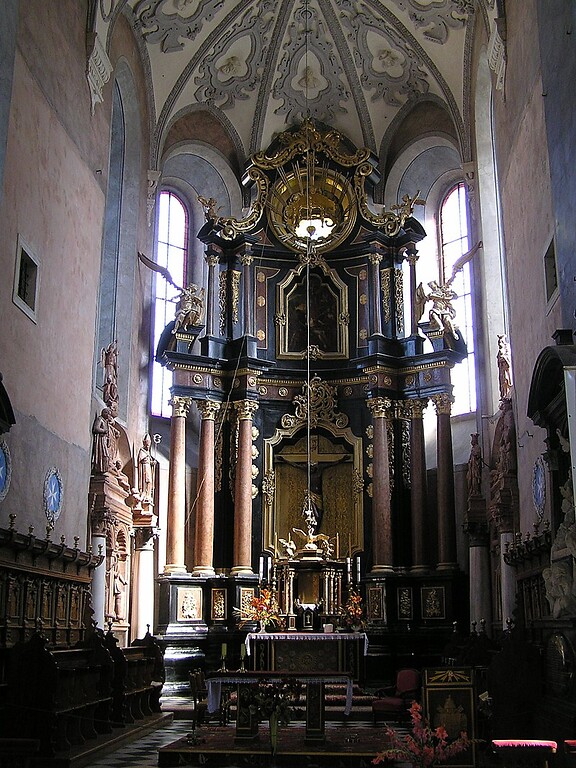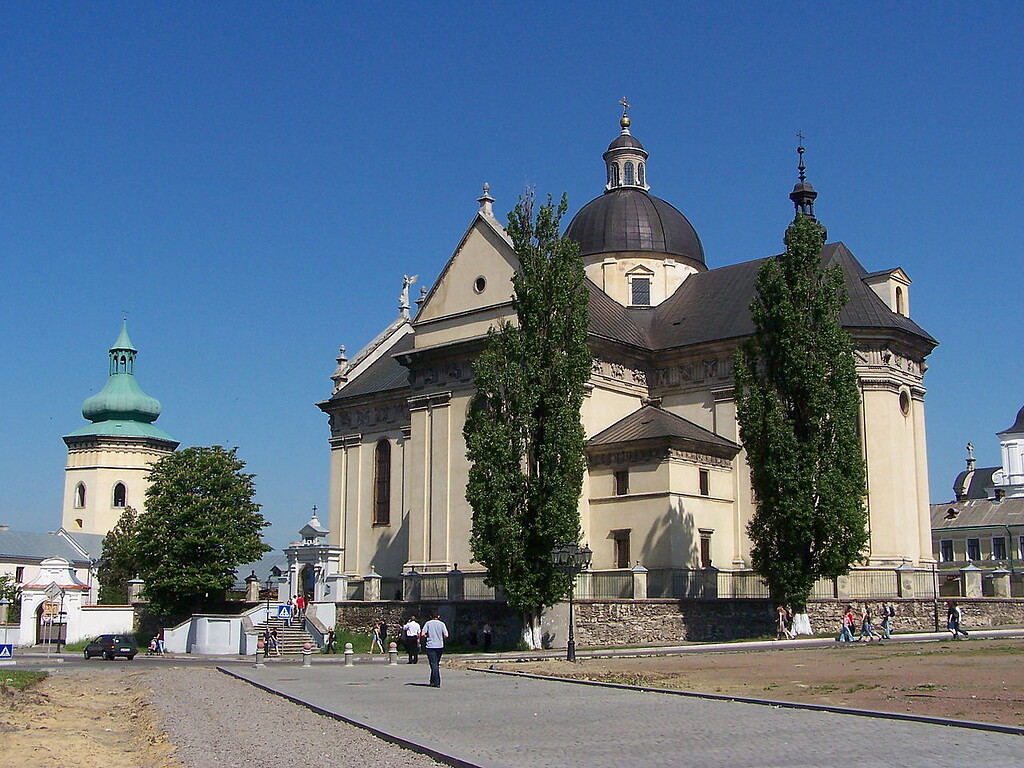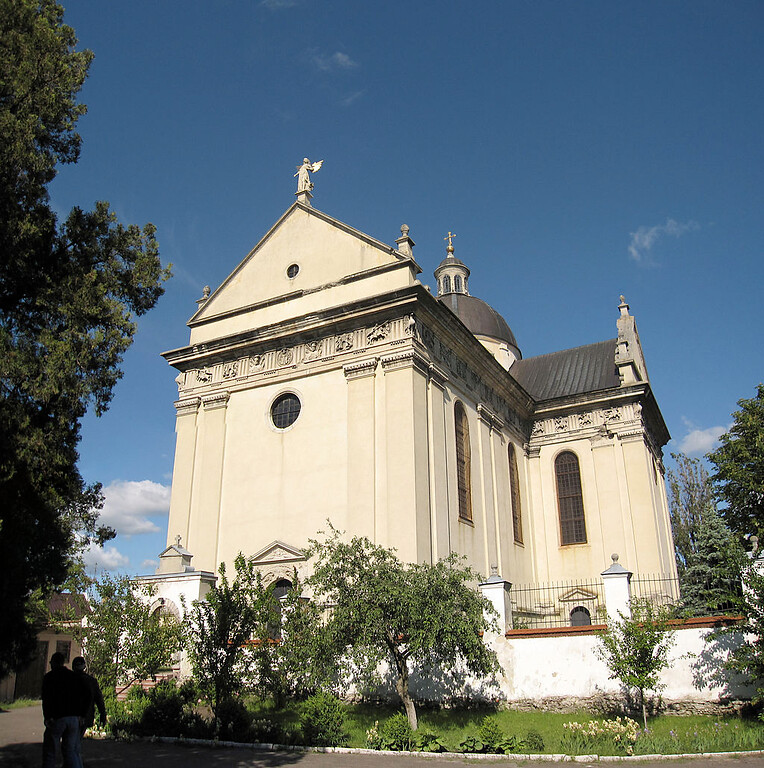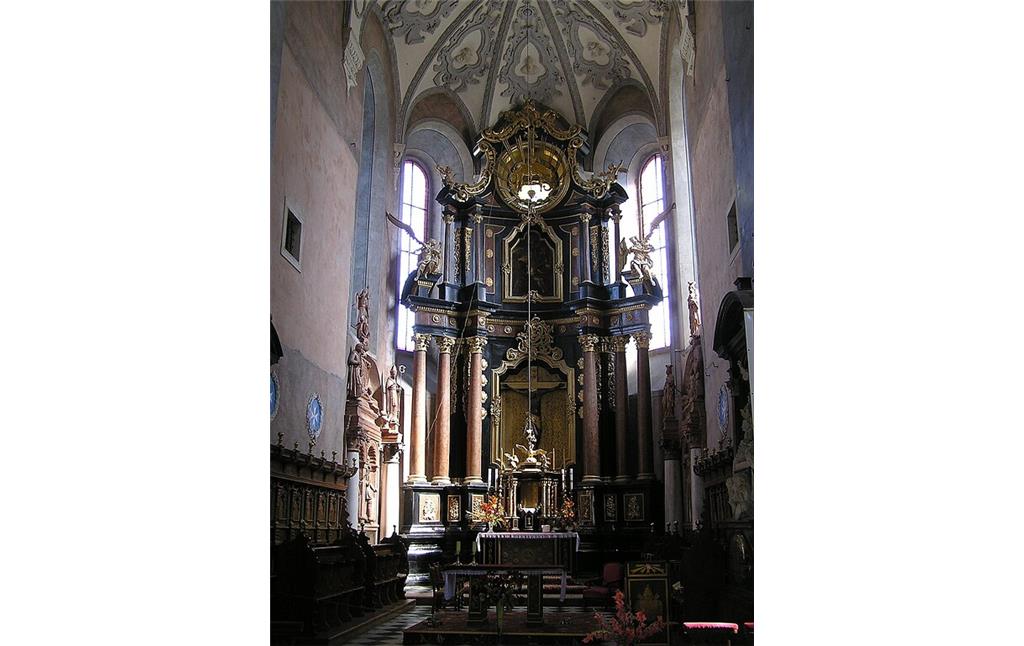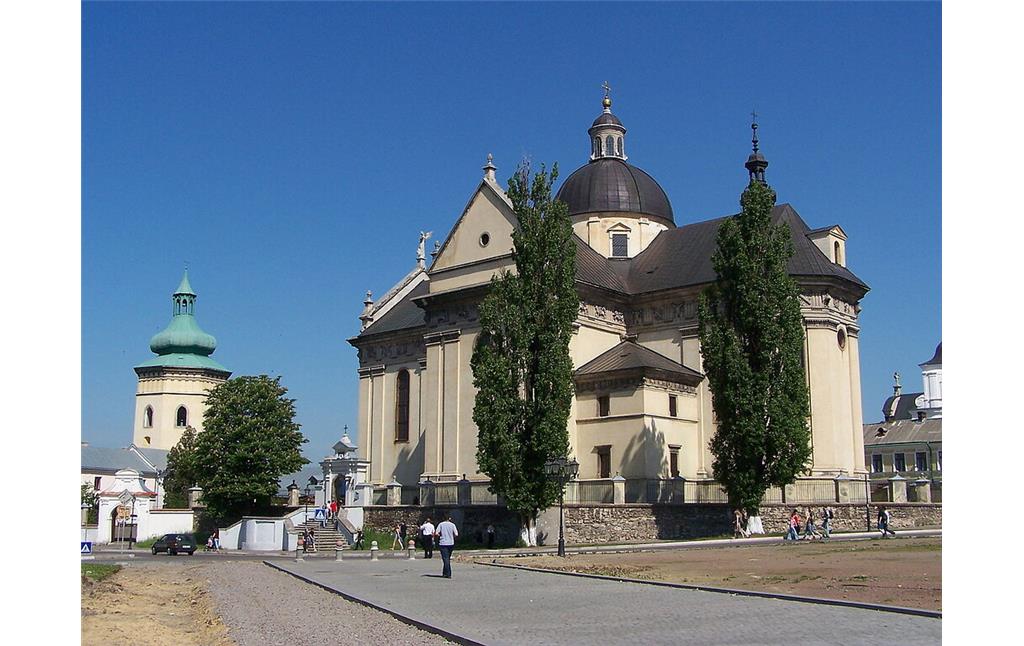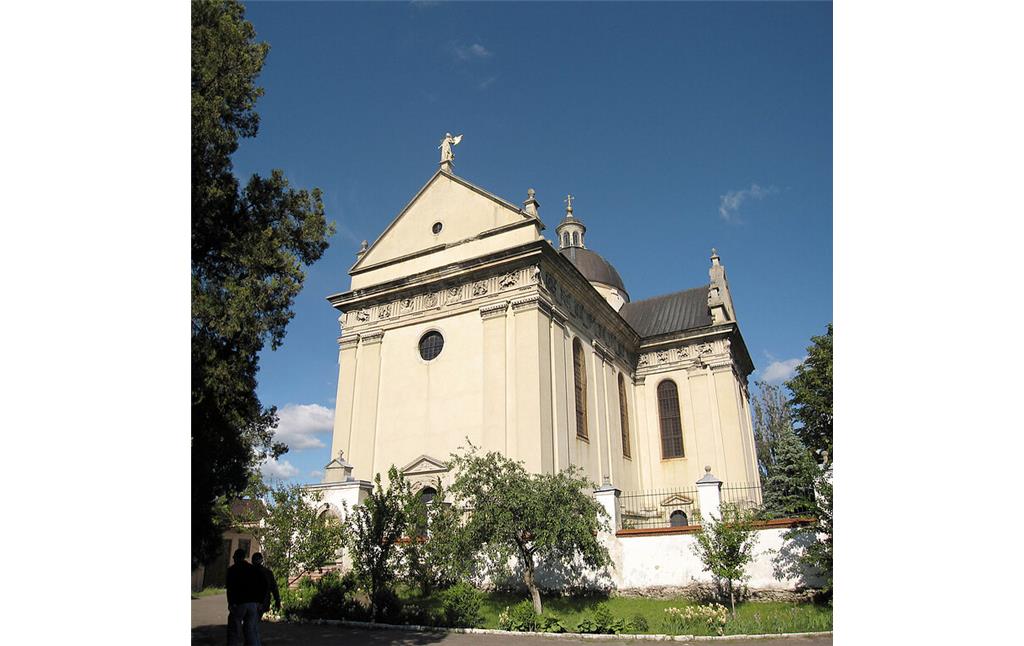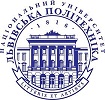
Apart from the Zolkiewsky family, the church contains the family vaults of their relatives such as the Danilowiczy and the Sobiesky, notably Jakub Sobieski (1590-1646) and King Jan III Sobieski (1629-1696). The church is often viewed as a shrine to the golden age of Polish military achievement; so much so that its ongoing restoration has been sponsored by the Warsaw University of Technology and the Polish military.
According to the number and significance of the burials of prominent figures of the Polish state, this church is often called „Little Wawel”, in contrast to the royal castle Wawel in Krakow.
The church is raised on a terrace constructed by the Turkish captives. The bell tower, originally part of Zhovkva's fortifications, leans somewhat to the east.
Two statues attributed to Andreas Schlüter (1659-1714) are one of the main decorations of this building. The dome is heavily coffered. In the 17th century, the walls of the church were decorated with pictorial representations of Zolkiewski's and Sobieski's battles executed by Szymon Boguszowicz (1575-1648) and Martin Altamonte, among others. They have since been moved to another tourism point of Lviv region (Olesko Castle).
(Daria Kushnir, Lviv Polytechnic National University, 2021)
